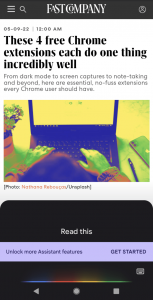Consumer demand for video content is on the rise. As Cisco revealed in their Visual Networking Index report, 55 percent of mobile traffic in 2014 was video and it’s projected to grow to 80% by 2019. That means a lot of people are watching content from a lot of different devices. But it also means there is a greenfield opportunity to generate revenue from that video content. The only question is, “how?”
First, let’s get some of the technical jargon out of the way. There are four basic ways to monetize your video:
- S-VOD or Subscription-VOD refers to the monetization of video by requiring users to pay a monthly fee to access the video content
- A-VOD or Advertising-VOD refers to the monetization of video by placing ads within the video itself (i.e., pre-, mid-, and post-roll)
- T-VOD or Transaction-VOD refers to the monetization of video with a one-time fee for downloading content (i.e., you “buy” a movie)
- PPV or Pay-Per-View (most often applied to live streaming) refers to monetization of video by charging users a set fee to watch the video one-time
These four methods for monetizing your video are pretty straight forward. You can charge people a monthly subscription, run advertisements, let users pay to download your content, or you can charge a one-time fee for watching the video.
However, these aren’t the only ways you can implement the different business models we’ve just outlined. With a little creativity, you can execute them in lots of different ways. Remember that your monetization strategy is an important way through which you engage with your audience, so you must find the right combination that works for your audience:
- Sponsorship (A-VOD)— Branding rights can be purchased by an advertiser sponsor for a certain area of your website or your player. This is especially a great idea if you are planning to have a dedicated app, rather than web-based viewing, for your mobile audience. From an advertising perspective, sponsorship is far less intrusive that running ads directly in your video stream.
- Pay Wall (S-VOD and T-VOD)— For a recurring fee, you provide users access to content that is only available to monthly subscribers. Alternatively, you can mix free and pay content together on the same wall and simply charge users a one-time-fee to watch specific content.
- Credits (T-VOD)— Users purchase “credits” that they can apply to different content, based on title or time spent watching. For example, a user could be charged a credit for each 10 minute increment they watch versus paying for the whole title, enabling them to snack on content they might find appealing with the option to watch the whole thing for a discounted number of credits.
- Freemium (A-VOD, PPV)—Subsidizing content through advertising enables users to watch both VOD and live events without spending any money. Users that are offended by the advertising can pay a flat fee to watch the content ad-free. Hulu has this system in place, offering an ad-free experience with their Hulu Plus paid option. Free ad-subsidized content can also be made available in exchange for detailed information that you can collect, aggregate, and sell.
To find out how to make all this happen, stay tuned for part two of this article!
Digital & Social Articles on Business 2 Community(60)
Report Post





